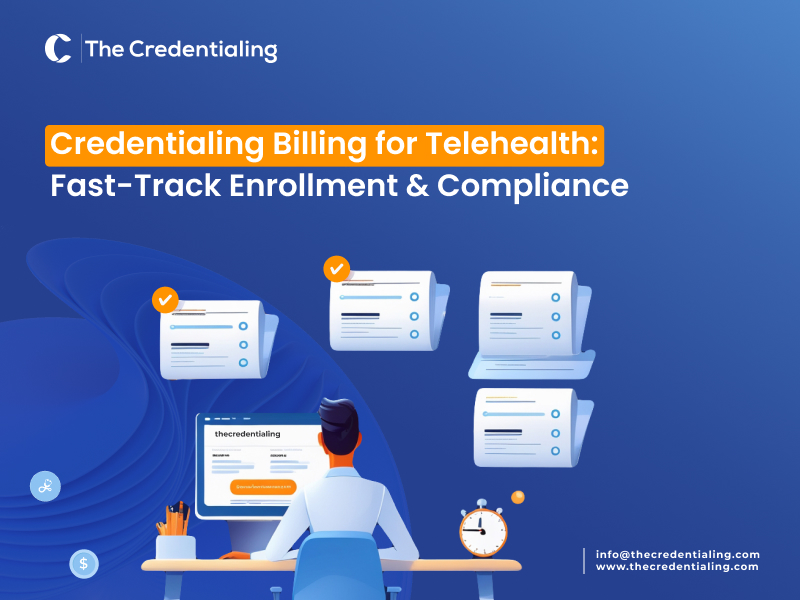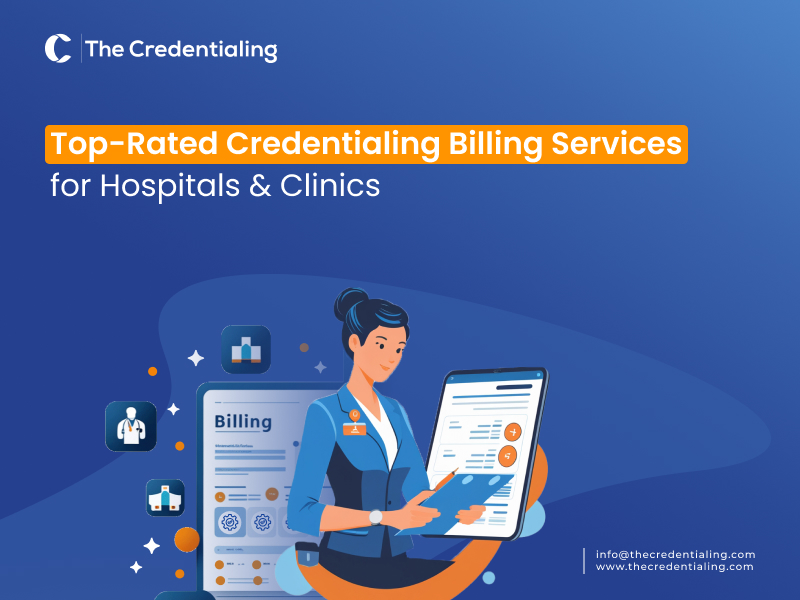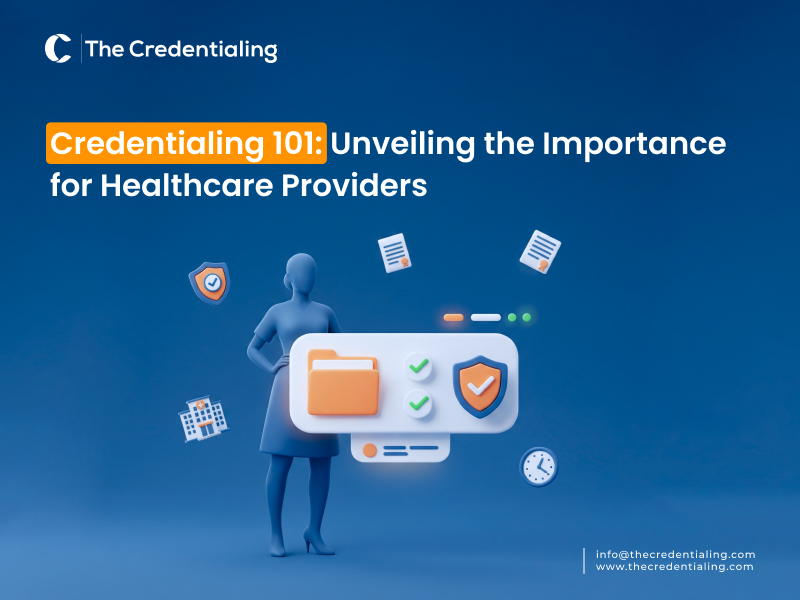Credentialing Billing for Telehealth: Fast-Track Enrollment & Compliance
Streamline telehealth credentialing and billing. Ensure fast enrollment, compliance, and reimbursements with expert provider solutions tailored to your needs.
Schedule Free Demo Today
Telehealth in healthcare is always and will continue to be a crucial component in healthcare delivery in 2025. Although the last quarter of 2023 has witnessed over 12.6% of Medicare beneficiaries utilizing telehealth services, the number is expected to rise.
The Centers for Medicare & Medicaid Services (CMS) has extended telehealth flexibilities through March 31, 2025. Such a percentage depicts that more beneficiaries will receive services from their homes. However, tracking down the evolving nature of telehealth reimbursement 2025 and licensing isn’t as easy as it may sound.
Providers are prone to the key challenges, including the state-specific guidelines. For instance, the need for timely credentialing renewals every two years necessitates an effective approach to compliance.
On the other hand, implementing streamlined processes for enrollment and adherence to CMS documentation requirements is essential for maintaining efficient credentialing billing for telehealth and ensuring uninterrupted patient care.
Follow this comprehensive guide and learn about the telehealth billing guidelines 2025 and accelerate your practice’s credentialing and billing needs for telehealth.
Telehealth in Healthcare: Understanding the Rising Demand & Potential Credentialing Requirements
With an increased demand for remote care, especially in underserved areas, credentialing has become a key focus of healthcare professionals. This is an innovative and convenient method of providing care for providers and accessing care advancement for patients.
Hence, telehealth ensures a twofold benefit. As for the credentialing, this process sets care providers right with the necessary credentialing criteria such as having a state license, required education and skills, and experience to provide the best care following the updated standards.
In the telehealth landscape, credentialing requirements vary in terms of the features and purpose. Some of the unique challenges that the professionals face compared to the traditional credentialing methods are as follows:
- The difference in license requirements across various states.
- Maintaining the provider's information security and privacy in the digital mode.
- Meeting the evolving nature of the credentialing process for virtual care.
Such requirements pose challenges, as there is a need for advanced knowledge of technology and resources to offer smart solutions.
Plus, staying straight to maintain the quality standards of provider qualifications is a must while ensuring patient safety as the prime focus of the entire effort. Below are the key points highlighting the difference between traditional and telehealth credentialing requirements:
The difference between telehealth and traditional credentialing
These points significantly highlight the difference in reimbursement for telehealth vs. in-person requirements:
- In traditional credentialing, providers work within a specific geographic area, while in telehealth credentialing, providers deliver care across multiple states and regions.
- Telehealth providers deal with varying licensing requirements from one state to another, while traditional providers only comply with the local state regulations.
- Professionals need advanced technological support in telehealth credentialing, for provider information storing and security, while in the traditional process, providers rely on physical documentation.
- The verification process for telehealth providers requires additional steps to confirm the quality of virtual care.
- Telehealth credentialing providers need additional knowledge on digital privacy and comply accordingly with the digital privacy rules.
Credentialing Requirements for Telehealth Providers: Licensure, Payer-Specific Guidelines & Compliance
Telehealth is a past trend, however, the credentialing process in telehealth has undergone modifications after the COVID-19 pandemic. Credentialing and licensing ensure that telehealth providers deliver safe care to patients.
However, the complexities arise due to the implementation of compliance requirements, adding to the administrative workload due to the scarcity of resources in rural areas. Moreover, many states require the periodic renewal of the licensure, such as every one to two years, to enhance the portability of the clinical license.
For instance, the federation state medical boards offer federation credentialing verification service and a uniform application for licensure that streamline the application process. Other states also initiate interstate compacts to facilitate multi-state licensing.
There are some licensure compacts, including the nurse licensure compacts, to offer providers one multi-state license through which the providers can participate in all participating states.
Other states require an interstate medical licensure compact that expedites licensure to make it easier for providers to apply for many licensures at one time.
Apart from the state licensure requirements, there are payer-specific requirements for telehealth credentialing. These include the requirements of separate documentation and applications that may lead to delays and added administrative workload.
Telehealth providers also need to focus on and follow the compliance standards set by the CMS, NCQA, and other state boards. This includes the verification of provider qualifications, maintaining up-to-date credentials, and telehealth-specific credentialing requirements.
What is the CMS Ruling on Telehealth Credentialing?
The Centers for Medicare & Medicaid (CMS) updates for 2025 include both the telehealth billing and credentialing guidelines, which are reported in the Calendar Year (CY) 2025 Medicare Physician Fee Schedule (FPS) Final Rule.
The purpose of these changes is to enhance flexibility, ensure patient safety, and accelerate the administrative process for the credentialing departments to notice. The Key changes in the CMS telehealth billing guidelines encompass:
The Use of Practice Address for Billing
The telehealth guidelines 2025 suggest that providers working from the comfort of their home can continue using their enrolled practice location as their official billing address. With this extension, providers do not need to disclose their personal home address. Plus, it simplifies the administrative procedures and addresses privacy concerns.
Virtual Supervision for Resident Physicians
CMS permits supervising physicians to provide "direct supervision" virtually via real-time audio and video communication. This flexibility, extended through December 31, 2025, supports training environments. Moreover, it offers resident physicians the opportunity to enhance their experience in telehealth settings.
Inclusion of Audio-Only Telehealth Services
CMS also helps providers with audio-only telehealth services concerning the technological disparities among patients. Providers can utilize this facility for certain treatments, including opioid use disorder, when patients are unable or unwilling to use video technology. Such a policy will promote broader access to care for patients with limited resources.
The Key Documentation Requirements
CMS telehealth documentation requirements for credentialing suggest the maintenance of comprehensive records such as:
- Verification of medical necessity for telehealth services.
- Documentation of patient and provider locations during sessions.
- Records of patient consent for telehealth services.
- Details of the communication technology used.
- Use of appropriate billing codes and modifiers specific to telehealth.
HIPAA Compliance and Data Security
Following the CMS Final Rule, providers must confirm that the telehealth programs are HIPAA-compliant. These encourage the providers to have strong encryption and data protection measures. This may require the practices for regular staff training on HIPAA guidelines and having protocols for handling data breaches as essential components of compliance.
Billing Challenges and Reimbursement Policies in Telehealth
The year 2025 poses challenges in the complex landscape of medical billing and credentialing services for telehealth. The factors are the evolving nature of reimbursement polices and telehealth regulations by state.
The Centers for Medicare & Medicaid Services (CMS) has extended pandemic-era telehealth flexibilities until September 30, 2025, through which Medicare beneficiaries can receive services from home.
However, post-extension will witness many services reverting to being limited to rural locations. Such uncertainty poses great challenges for providers in long-term planning and billing processes.
Moreover, each state maintains its own licensure and credentialing requirements that further complicate the cross-state telehealth practices. Advocacy groups, including the American Telemedicine Association, are urging Congress to establish permanent telehealth reimbursement 2025 policies to ensure consistent access and reduce administrative burdens.
Without legislative action, providers and patients may face disruptions in telehealth services to significantly affect care continuity and financial stability.
Credentialing Impacting Billing & Revenue Cycle Efficiency? What’s the Turning Point?
Credentialing has always had a direct impact on healthcare billing, and telehealth isn’t an exception. Delays in the provider enrollment cause a greater difference in practice financial stability, including revenue loss and impacted billing efficiency.
For instance, a primary care physician’s delayed enrollment will equate to $100,000 in withheld payments per month. This will be considered as an average earning of $250 per patient. Moreover, the inefficiency occurs due to the late arrival of providers, including 25% of payments to small healthcare providers. As a result, the providers lose the ability to manage payroll, pay vendors and maintain a smooth operation.
Considering these pitfalls, the turning point is to integrate with Electronic Funds Transfer (EFT) and Electronic Remittance Advice (ERA) systems along with the maintenance of accurate National Provider Identifiers (NPI) and CAQH profiles. For the telehealth providers wanting to streamline reimbursements and reduce errors, it is essential to update credentials regularly while adhering to compliance and limiting the number of claim denials.
The reports suggest a rising ratio of claim denials, including a 54% of practices facing claim denials related to provider credentialing. Hence, these factors call for special attention to details and a shift in modio credentialing practice methods.
Why Automate Credentialing Billing for Telehealth?
Automating comes upfront in enhancing the efficiency of credentialing and billing for telehealth. The key perks of automating credentialing-related tasks are the ease of the entire process, fewer errors, and improved efficiency. The study by OSP Labs suggests that the automation has led to a 55% reduction in claim losses and process acceleration.
Hence, automating telehealth credentialing and billing through centralized digital portals will enhance operational efficiency and practice financial performance. Automation offers many features to consolidate provider data and reduce manual errors to improve the enrollment process.
On the other hand, the key perks include real-time tracking of healthcare credentialing companies application and process status, automated exclusion checks and renewal alerts to ensure ongoing compliance.
Outsource Telehealth Credentialing Billing With TheCredentialing Digital Efficiency: Ensuring Faster Enrollment & Compliance!
TheCredentialing digital portal for credentialing and enrollment is an all-inclusive system which is integrated with EFT, ERA, NPI, and CAQH to authenticate and support the real data of provider credentialing companies for physicians.
Our digital system offers easy access with a customized dashboard to stay alert while updating your credentials. Moreover, through this online platform, individual physicians or group practices can handle many types of credentialing, including Private, Medicare & Medicaid, and revalidation.
Outsource with our automated credentialing services to ensure a smooth workflow, efficiency and less administrative focus. When you hand over your credentialing to us, rest assured, you have approached the expert billers who handle your telehealth credentialing.
Our health insurance credentialing billing services are compliant with CMS and other necessary regulations, cost-effective, and tech-driven. Connect with our credentialing experts and ensure your enrollment is on the fast track to enable your practice for uninterrupted reimbursement, leading to stabilized revenue.
Sit Back and Relax! Let The Pros Handle Credentialing For You!
thecredentialing has built a strong portfolio while providing credentialing services to clients over the years. Our service includes helpful features that you won’t find anywhere else.
Schedule Free Demo Today!

